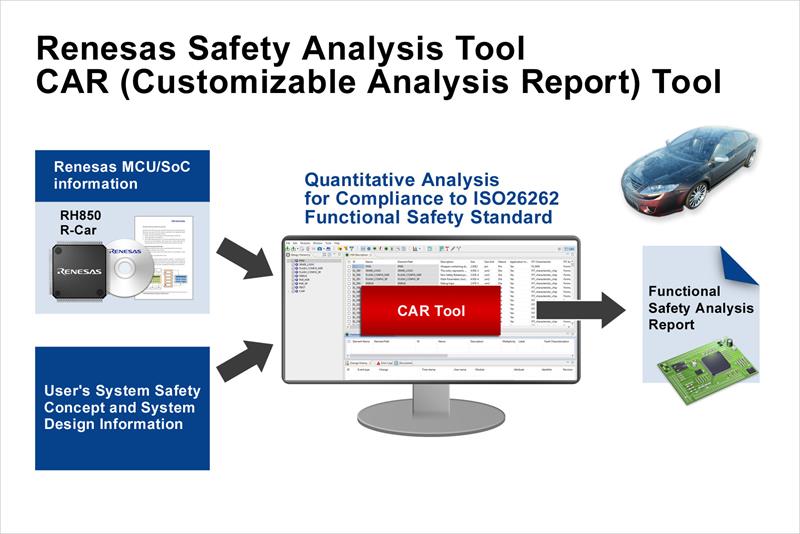The FMEDA (failure mode effects and diagnostics analysis) tool is optimised for the ISO 26262 standard, which addresses safety of electrical and/or electronic systems within road vehicles, and is the target for compliance of this revolutionary product.
As part of its functional safety support program, Renesas offers a portfolio of semiconductor products, software, solutions, and tooling in virtually every automotive application. As the newest member to this program, the CAR Tool addresses a very common market problem: How to adapt a general SEooC (Safety Element out of Context) safety analysis report to align with the final application-specific use case and the need to support several safety goals for one item.
“This is a tool developed by safety engineers, deeply involved with the creation of the ISO26262 standard since the beginning, for safety engineers,” said Riccardo Vincelli, Director of the Functional Safety Competence Center, Renesas. “It is the result of intensive internal activity to find solutions for daily challenges associated with efficient safety analysis, effective exchange of results with stakeholders, and customisation based on different use cases.”

The CAR Tool unifies key aspects of the safety analysis by offering a multi-layered view of the safety-related component, complete with customisable analysis parameters and all of the results required by ISO 26262, such as single point fault metric (SPFM) and latent fault metric (LFM).
The tool also provides the user with estimations for both probabilistic metric for random hardware failures (PMHF) and its evaluation of each cause of safety goal violation. These results can be displayed from the entire component down to each single element via different hierarchical levels, accurately splitting its FIT in the appropriate fault class (single-point, residual, latent, etc.) This should also make it easy and effective to browse complex system-on-chip (SoC)/microcontroller (MCU) safety analyses.
For a given product, the provided library can be customised to different applications, precisely configured to match the usage of the component in the target system. A powerful GUI is the window for visibility into the product, and for obtaining and configuring safety related information. FIT characteristics, fault characterisation, failure modes, fault impact, and fault coverages are just some of the parameters under user control.













